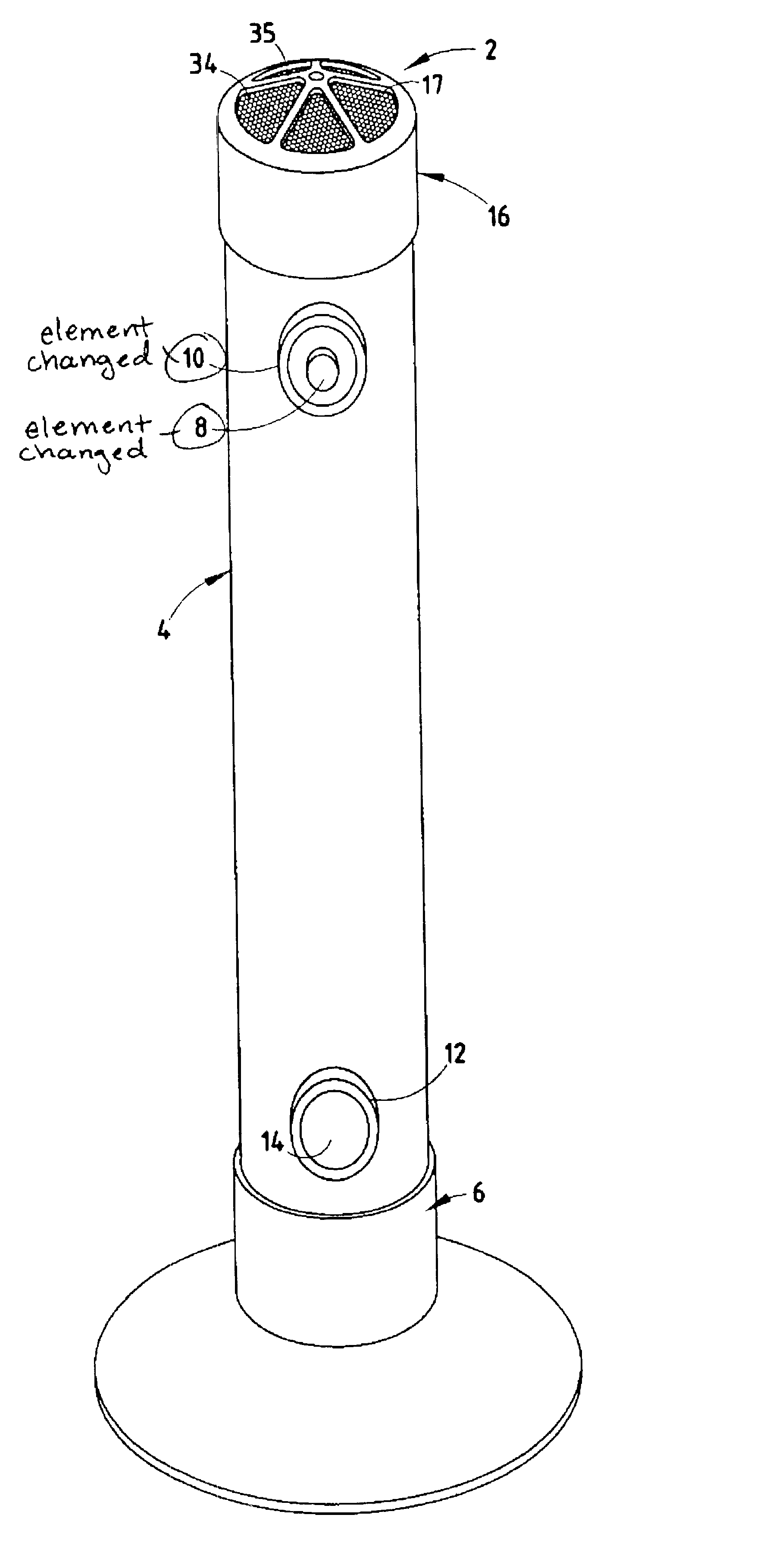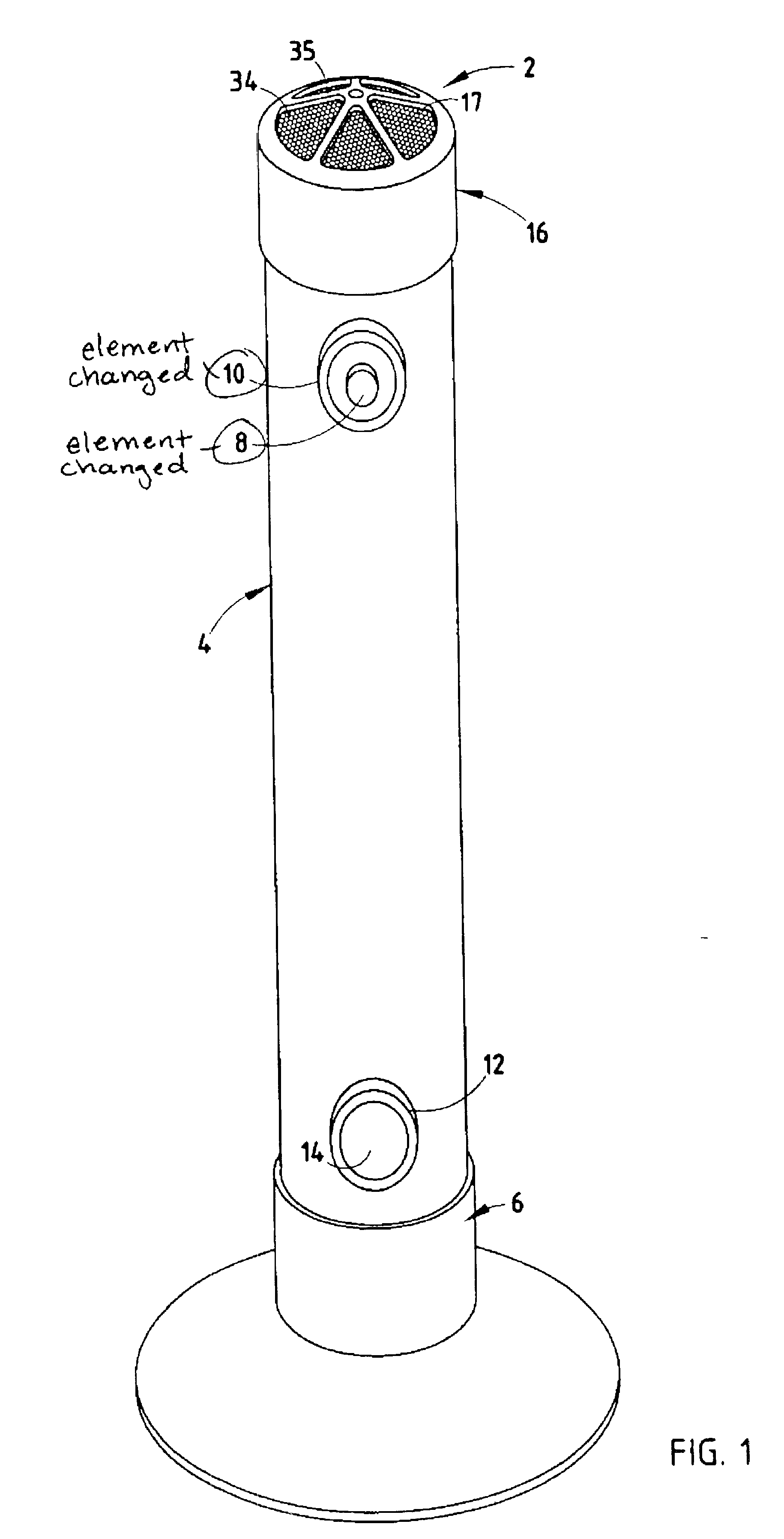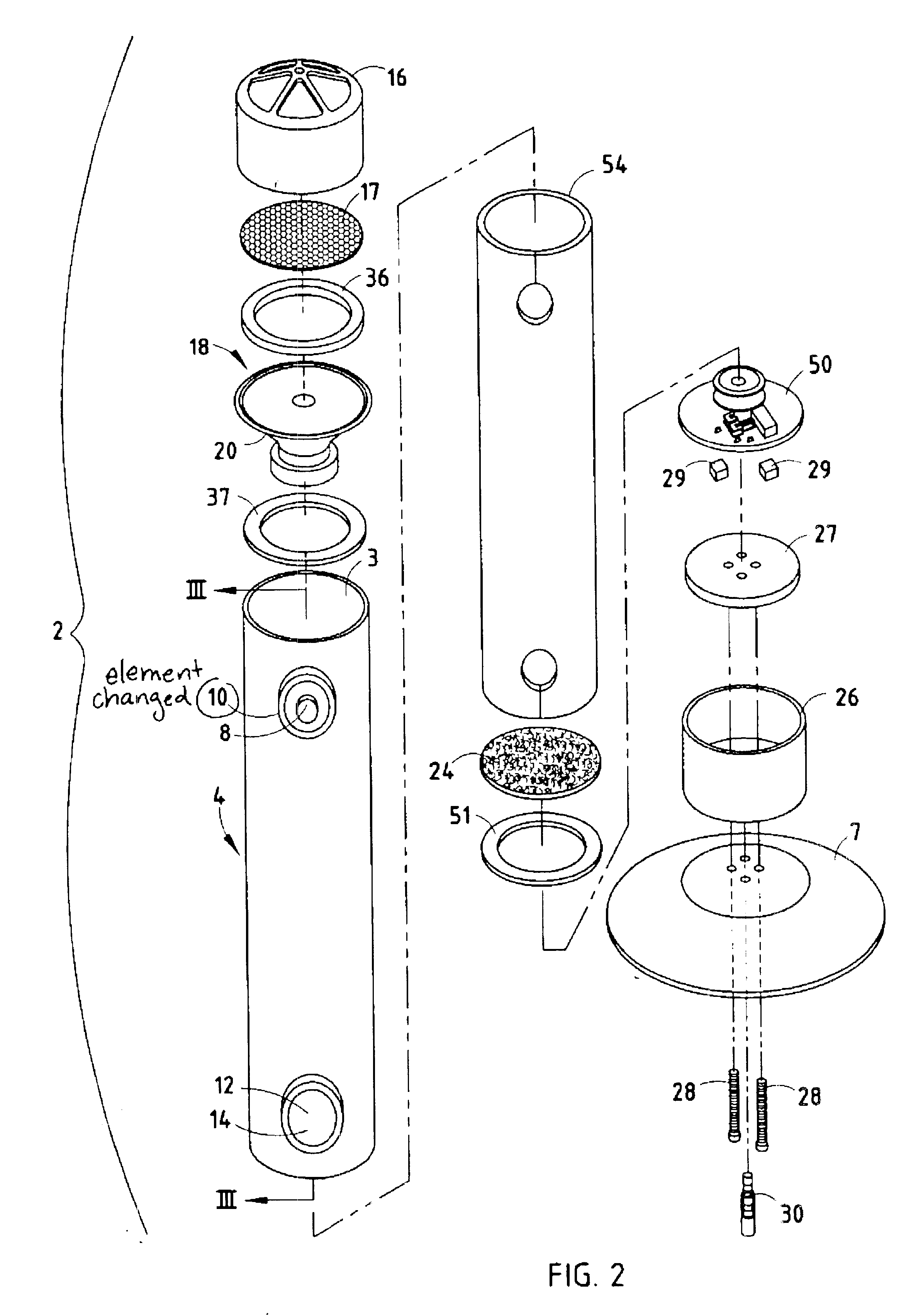Speaker system and method for making the same
a speaker system and speaker technology, applied in the field of tubular speaker systems, can solve the problems of difficult aesthetically integration, high cost of cabinet speaker enclosures, drawbacks of prior art tubular speaker systems, etc., and achieve the effects of clear, crisp sounds, and good bass ratio
- Summary
- Abstract
- Description
- Claims
- Application Information
AI Technical Summary
Benefits of technology
Problems solved by technology
Method used
Image
Examples
first embodiment
End cap 6a is in most respects similar to head member 16 except that instead of housing mid-bass speaker 18, a cross over circuit 50a is disposed within end cap 6a and secured by circular ring 37a. Further, switches 52a are mounted below perforated sheet 17a rather than on the side of the base. Switches 52a are then accessed through the triangular-shaped openings 34a. This positioning allows the end user the ability to adjust the high and low-range frequencies as described in the first embodiment, with the added advantage of having the switches concealed from view by perforated sheet 17a achieving a more aesthetic appearance. Additionally, a ¼ inch phone jack 53 is installed in end cap 6a to power speaker system 2a.
second embodiment
the present invention also uses a slightly modified head 16a (FIG. 15). Modified head 16a houses mid-bass speaker 18a as described in the first embodiment. Additionally, modified head 16a includes a knob 41 (FIG. 15) disposed within a fastener mechanism 40 (FIG. 16) which allows speaker system 2a to be suspended or fastened in an arrangement off of the floor rather than in its free standing arrangement on the floor surface. Characteristically, but not required, fastener mechanism 40 is disposed on modified head 16a in the center of its top face in an area where ribs 35a radially converge.
In one working embodiment of the present invention, fastener mechanisms 40 are tapped holes which are further used to facilitate the installation of knobs 41 (FIGS. 14-16). However, any fastening mechanism could be used, as for example a protrusion, clip, hook, hole, hanger, or the like, and the examples recited are not meant to be limiting in any way unless the claims expressly state otherwise.
The ...
PUM
 Login to View More
Login to View More Abstract
Description
Claims
Application Information
 Login to View More
Login to View More - R&D
- Intellectual Property
- Life Sciences
- Materials
- Tech Scout
- Unparalleled Data Quality
- Higher Quality Content
- 60% Fewer Hallucinations
Browse by: Latest US Patents, China's latest patents, Technical Efficacy Thesaurus, Application Domain, Technology Topic, Popular Technical Reports.
© 2025 PatSnap. All rights reserved.Legal|Privacy policy|Modern Slavery Act Transparency Statement|Sitemap|About US| Contact US: help@patsnap.com



